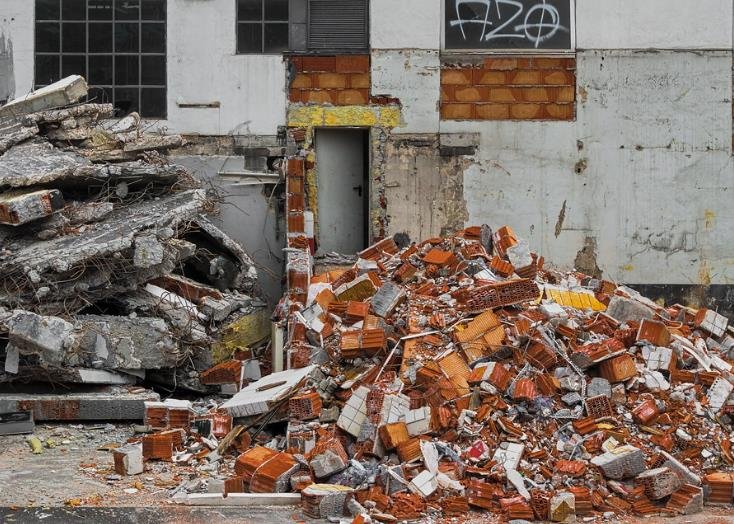On Vancouver Island, construction waste is finding new life thanks to a groundbreaking initiative by the non-profit Light House. Launched in August, the Building Material Exchange (BMEx) is bridging the gap between contractors with surplus materials and companies in need of them, promoting sustainability and reducing landfill waste.
Gil Yaron, Light House’s managing director of circular innovation, explained, “We meet with companies and basically do a mini waste audit to determine what waste they’re producing and then we will meet with other companies to identify what their needs are and then we match them up.” It’s a simple yet effective approach that’s already making waves in the local construction scene.
Success Stories: Turning Trash into Treasure
Though BMEx is less than six months old, it has already facilitated several successful matches. One notable example involved a demolition company in Victoria and a Vancouver-based private firm looking for bricks to use in their new corporate offices’ interior fit-out. These connections not only save materials from ending up in landfills but also help businesses reduce their costs and environmental footprint.
ReWood, a volunteer-led initiative in Victoria, is another beneficiary of BMEx’s efforts. They’re repurposing lumber from construction sites to build greenhouses and planter boxes for farmers, agricultural associations, and community gardens. Similarly, Chemainus-based NEXUS Modular Solutions supplied wasted wood and metal to a designer for a multimedia art project, showcasing the creative potential of reused materials.

Diverting Waste from Landfills: A Critical Mission
Light House’s mission extends beyond just reusing materials—it aims to significantly reduce the amount of construction waste sent to landfills. “There’s a huge amount of valuable material that is going to waste,” Yaron emphasized. “From an economic perspective, we’re throwing perfectly good material away.”
According to the Capital Regional District’s 2022 waste composition survey, 172,886 tonnes of material were disposed of in Hartland Landfill in 2021, with 13.3 percent being non-wood construction and demolition waste. In Victoria alone, salvaging and repurposing materials from demolition sites could divert 3,000 tonnes of waste annually, as highlighted on the city’s website.
Overcoming Challenges: Changing Contractor Mindsets
Despite the clear benefits, many construction companies still discard reusable materials. Yaron points out, “Contractors are under pressure to build quickly, and they can’t tolerate things that disrupt their building schedule.” The need for speed often overshadows the potential risks of altering waste management practices.
Cost is another significant barrier. “It currently costs less for a company to throw much of this material away than it would to divert it,” Yaron added. This economic disincentive makes it challenging to convince companies to adopt more sustainable practices, even when the environmental benefits are clear.
The Environmental Impact: Beyond Waste Reduction
Reusing construction materials has far-reaching implications for the environment. The building and construction sector is responsible for 37 percent of the world’s greenhouse gas emissions, according to the UN Environment Programme. By diverting materials like concrete, aggregate, wood, drywall, and metals from landfills, initiatives like BMEx help reduce the sector’s carbon footprint.
Environmental Benefits:
- Reduced Landfill Use: Less waste means fewer materials ending up in landfills.
- Lower Emissions: Reusing materials cuts down on the emissions associated with manufacturing new products.
- Resource Conservation: Preserves natural resources by maximizing the use of existing materials.
These benefits contribute to a more sustainable construction industry, one that aligns with global efforts to combat climate change and promote environmental stewardship.
Community Involvement: The Heart of BMEx
The success of BMEx relies heavily on community involvement and collaboration. By connecting different stakeholders—from demolition companies to designers and farmers—the initiative fosters a sense of shared responsibility towards sustainability.
“We’re building a community that values resources and sees waste as an opportunity,” Yaron stated. This mindset shift is crucial for long-term sustainability, ensuring that reusable materials continue to find new purposes rather than being discarded.
Future Plans: Expanding the Reach of BMEx
Looking ahead, Light House aims to expand BMEx’s reach beyond Vancouver Island. Plans are in place to replicate the program in other regions, scaling the initiative to maximize its impact on construction waste management nationwide.
Upcoming Goals:
- Regional Expansion: Implement BMEx in additional areas to increase material diversion.
- Partnership Development: Forge new partnerships with more companies and organizations to broaden the network.
- Educational Outreach: Educate more contractors and businesses about the benefits and processes of material reuse.
These goals reflect Light House’s commitment to creating a more sustainable future through innovative waste management solutions.
Economic Benefits: Saving Money and Resources
Beyond environmental gains, BMEx offers significant economic advantages for participating companies. By reusing materials, businesses can reduce their procurement costs and minimize expenses related to waste disposal.
Financial Advantages:
- Cost Savings: Lower expenses on new materials and waste management.
- Increased Efficiency: Streamlined processes for material reuse enhance operational efficiency.
- Market Differentiation: Companies adopting sustainable practices can differentiate themselves in the market, attracting eco-conscious clients.
These financial incentives make a compelling case for businesses to embrace material reuse, aligning economic benefits with environmental sustainability.
The Bigger Picture: Global Implications of Local Actions
While BMEx operates locally, its impact resonates on a global scale. Sustainable waste management practices in Victoria contribute to broader efforts to reduce global construction waste and promote circular economy principles.
“Every tonne of material we divert has a ripple effect,” Yaron remarked. “It sets a precedent and inspires others to adopt similar practices, creating a collective impact that extends far beyond our immediate community.”
Encouraging Sustainable Practices Across Industries
The success of BMEx demonstrates that sustainable practices are not only feasible but also beneficial across various industries. By showing how construction waste can be repurposed effectively, Light House encourages other sectors to explore similar initiatives, fostering a culture of sustainability and resourcefulness.
Inspiration for Other Sectors:
- Manufacturing: Repurposing scrap materials to reduce waste.
- Retail: Encouraging product recycling and upcycling.
- Technology: Designing products for easier disassembly and material recovery.
These examples highlight the potential for widespread adoption of sustainable practices, driving systemic change towards a more resource-efficient economy.
















